Assessing student learning is a critical component of education. By using various types of assessments, educators can enhance their teaching strategies and improve student outcomes. These assessments provide valuable insights into student progress and help identify areas for improvement.
Key Takeaways: Types Of Assessments In Education
- Assessments in education play a vital role in measuring student progress and improving outcomes.
- There are different types of assessments that educators can use, such as formative, summative, diagnostic, performance-based, self-assessment, and peer assessment.
- Each assessment type serves a specific purpose and provides valuable information for instructional decisions.
- Choosing the right assessment strategy requires considering student needs, instructional goals, and desired outcomes.
- Assessments enable educators to make data-informed decisions and continuously improve teaching practices.
Importance of Assessing Student Learning
Assessing student learning is a critical component of effective education. It provides educators with valuable insights into student understanding, progress, and areas where intervention may be necessary. By assessing student learning, educators can measure student progress, promote student success, and contribute to teacher well-being.
“Assessing student learning allows educators to collect data, make informed instructional decisions, and continuously improve teaching practices.” – John Smith, Education Expert
Measuring Student Progress
Assessments enable educators to measure student progress and determine the level of understanding and mastery of concepts and skills. By using a variety of assessment strategies, such as quizzes, tests, and projects, educators can gauge individual student performance and identify areas that require additional support or intervention.
Promoting Student Success
Assessments are essential tools for promoting student success. They provide valuable feedback to both educators and students, allowing for targeted instructional strategies and personalized learning experiences. Assessing student learning helps students identify their strengths and weaknesses, set learning goals, and track their own progress, fostering a sense of ownership and motivation for academic achievement.
Contributing to Teacher Well-Being
Assessing student learning contributes to teacher well-being by providing valuable data for instructional decisions. When educators have accurate insights into student progress and areas of improvement, they can tailor their teaching strategies to meet student needs effectively. This data-driven approach saves teachers time, reduces stress, and enhances job satisfaction, ultimately contributing to their overall well-being and professional growth.
| Benefits of Assessing Student Learning |
|---|
| Measure student progress |
| Promote student success |
| Contribute to teacher well-being |
Assessing student learning is vital for ensuring continuous improvement in education. It empowers educators to make data-informed instructional decisions, personalize learning experiences, and support student success. By recognizing the importance of assessing student learning, educators and educational institutions can create a positive and effective learning environment that benefits both students and teachers.
Formative Assessment
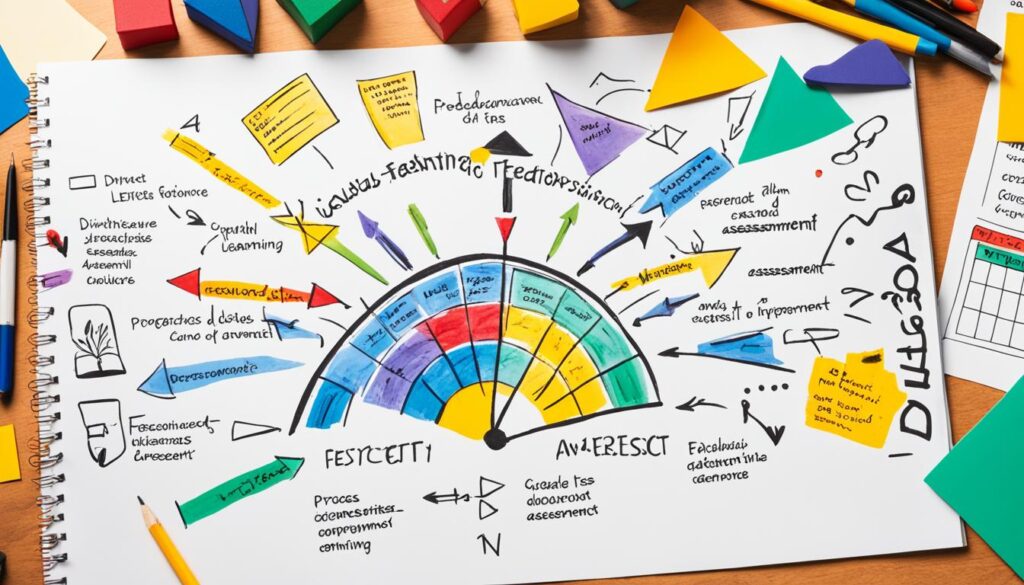
Formative assessment is a crucial component of effective teaching and learning. It involves monitoring student learning during the instructional process to gather valuable insights into their understanding and progress. The primary goal of formative assessment is to provide ongoing feedback that supports and guides student learning.
There are various types of formative assessments that educators can employ to monitor student understanding and provide timely feedback. Examples of formative assessments include:
- Quizzes: These short assessments can be used to gauge student comprehension and identify areas that require further clarification.
- Class Discussions: Engaging students in class discussions allows educators to assess their understanding and address any misconceptions in real-time.
- Think-Pair-Share Activities: This collaborative activity encourages students to think critically, discuss ideas, and share their understanding with peers.
Formative assessments are typically low-stakes, meaning they have minimal impact on students’ final grades or evaluations. The primary focus is on providing formative feedback that helps students improve their learning outcomes.
Teachers can use the data obtained from formative assessments to adapt their instructional strategies, identify areas of strength and improvement, and provide targeted support as needed. Formative assessments empower educators to make data-informed decisions that enhance student learning.
In summary, formative assessment is a valuable tool for monitoring student understanding, providing timely feedback, and supporting their learning journey. By utilizing a variety of formative assessment strategies, educators can create a dynamic learning environment that facilitates continuous improvement.
Benefits of Formative Assessment
| Benefits | Description |
|---|---|
| 1. Encourages Active Learning | Formative assessment engages students in the learning process and encourages active participation. |
| 2. Provides Ongoing Feedback | Teachers can provide immediate feedback to students, addressing misconceptions and guiding their learning. |
| 3. Identifies Learning Gaps | Formative assessment helps identify areas of weakness or gaps in student understanding, allowing for targeted interventions. |
| 4. Supports Differentiation | Formative assessment provides valuable data that enables educators to differentiate instruction according to student needs. |
| 5. Fosters Student Ownership | By actively engaging in their own assessment and receiving feedback, students develop a sense of ownership over their learning. |
Summative Assessment
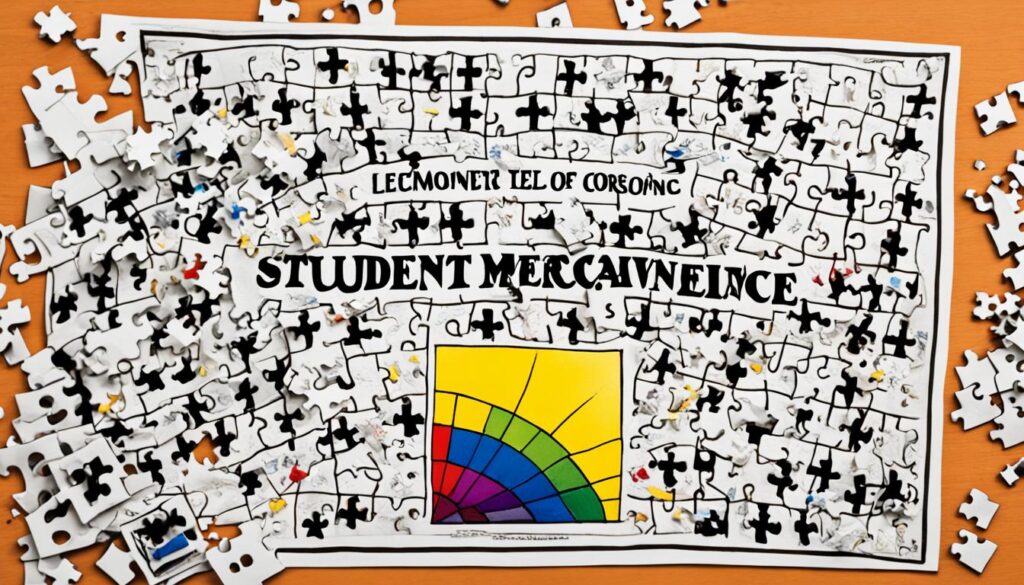
Summative assessment is a crucial component of the evaluation process in education. It occurs at the end of an instructional period and serves to evaluate student learning and achievement. This type of assessment is often used to determine the level of mastery of content, assign final grades, and assess readiness for the next level of instruction.
Examples of summative assessments include:
- Final exams: These comprehensive assessments cover the entire course curriculum and provide a snapshot of students’ knowledge and understanding.
- End-of-unit tests: These assessments measure students’ learning outcomes at the end of a specific unit or topic.
- Standardized tests: These assessments are administered uniformly across a broad population of students and aim to provide an objective measure of student performance.
Summative assessments play a significant role in evaluating student learning and contribute to the measurement of overall student achievement. They provide educators with data that can be used to make informed instructional decisions, identify areas for improvement, and promote educational growth.
“Summative assessment occurs at the end of an instructional period and evaluates student learning.”
| Advantages of Summative Assessment | Disadvantages of Summative Assessment |
|---|---|
| Provides a comprehensive evaluation of student understanding and performance. | Focuses on outcomes rather than the learning process. |
| Enables the assignment of final grades and the determination of mastery. | May create stress and anxiety for students, leading to potential bias in performance. |
| Assesses readiness for the next level of instruction or academic progression. | May not capture the full range of student abilities, skills, and knowledge. |
Summative assessments should be used in conjunction with other assessment types to provide a comprehensive evaluation of student learning. By combining summative assessments with formative, diagnostic, and performance-based assessments, educators can gain a more holistic understanding of student progress and tailor instruction accordingly.
Diagnostic Assessment
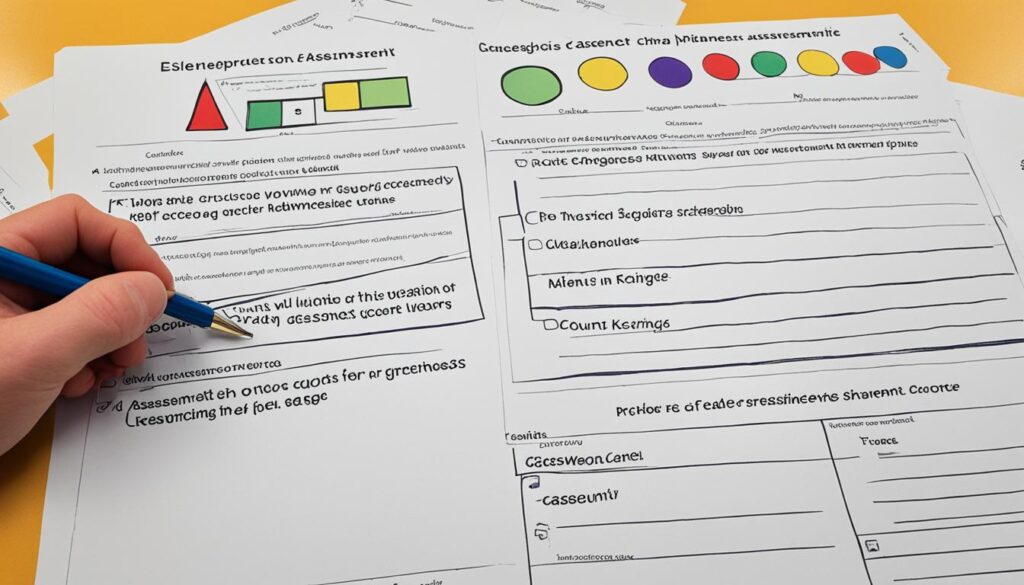
Diagnostic assessment is a critical tool that educators use to identify students’ prior knowledge, skills, and understanding of a particular topic. By gaining insights into each student’s baseline knowledge, educators can personalize instruction to meet individual student needs and address potential learning gaps. Diagnostic assessments provide valuable information that helps create tailored instruction plans and targeted interventions.
One example of a diagnostic assessment is a pre-test. This assessment is administered at the beginning of a unit or course to gauge students’ existing knowledge and understanding related to the content that will be covered. Pre-tests allow educators to identify areas where students already possess proficiency and areas where they may require additional support.
Another example is a concept map, which helps educators visualize students’ understanding of the connections between various concepts. By mapping out concepts and their relationships, educators can identify misconceptions and gaps in knowledge. This information then informs instructional decisions and helps educators design activities and lessons that address the specific needs of each student.
Diagnostic assessments serve as a crucial foundation for individualized instruction, allowing educators to tailor their teaching strategies to the unique needs of each student. By identifying student knowledge and learning gaps, educators can provide targeted interventions that address specific areas of weakness, leading to improved learning outcomes.
“Diagnostic assessments provide educators with valuable insights into students’ prior knowledge, allowing for more effective and customized teaching strategies.”
Below is an example of how a concept map could be used as a diagnostic assessment for a lesson on plant life cycles:
| Concept | Connections |
|---|---|
| Seed | Grows into a plant |
| Germination | Initiates plant growth |
| Photosynthesis | Process that converts sunlight into energy |
| Pollination | Transfer of pollen from one flower to another |
| Fertilization | Union of male and female gametes |
| Fruit | Contains seeds for reproduction |
| Dispersal | Spread of seeds to new locations |
Performance-Based Assessment

Performance-based assessment is a type of assessment that allows students to demonstrate their knowledge and skills through real-world tasks or activities. This form of assessment goes beyond traditional tests and exams and requires students to apply their understanding and competencies in practical situations.
Examples of performance-based assessment include:
- Projects: Students are assigned a task or problem and must develop a solution or create a project that showcases their understanding.
- Presentations: Students present their findings, research, or ideas in front of a class or an audience.
- Portfolios: Students compile a collection of their work to showcase their progress and growth over time.
- Hands-on experiments: Students engage in practical experiments or activities to demonstrate scientific concepts or principles.
Performance-based assessment allows students to apply their knowledge and skills in realistic scenarios, fostering active engagement and critical thinking. It provides a more authentic measure of student abilities and can assess a wide range of competencies, including problem-solving, collaboration, communication, and creative thinking.
By engaging in performance-based assessments, students develop a deeper understanding of concepts and their practical applications. They learn how to transfer their knowledge to real-world contexts, preparing them for future challenges and careers.
Self-Assessment
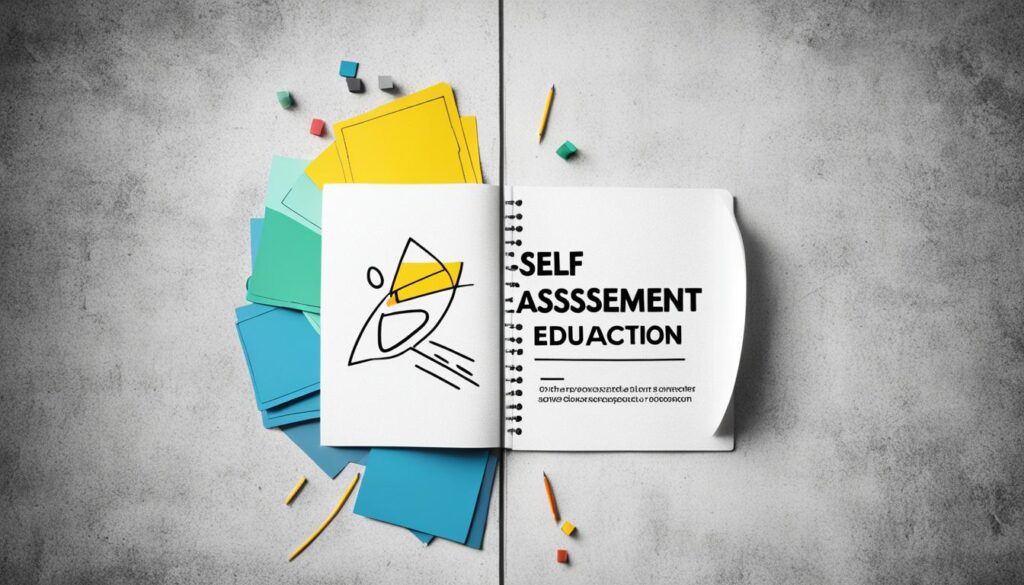
Self-assessment is a valuable type of assessment that empowers students to evaluate their own progress, skills, and understanding. It encourages reflection and fosters a sense of ownership over their learning journey.
Through self-assessment, students actively engage in metacognition, which allows them to reflect on their learning process, identify areas of strength and weakness, and set goals for improvement.
Examples of self-assessment activities include:
- Reflective Journaling: Students can keep a journal where they write about their learning experiences, challenges, and insights. This practice promotes self-reflection and deepens their understanding of the subject matter.
- Goal Setting: Students can set specific, measurable, attainable, relevant, and time-bound (SMART) goals. By defining clear objectives, they have a roadmap for their learning journey and can track their progress towards their goals.
- Self-Rating Scales: Students can use self-rating scales to evaluate their performance and understanding. These scales allow them to assess their level of proficiency in different areas and identify areas for improvement.
Self-assessment is more than just evaluating oneself; it helps students develop important skills such as self-regulation, critical thinking, and self-awareness. It fosters a growth mindset, where students embrace challenges, learn from mistakes, and persist in their pursuit of knowledge.
By actively engaging in self-assessment, students become more accountable for their learning and develop a sense of agency in their educational journey.
Peer Assessment

Peer assessment is a valuable type of evaluation that involves students evaluating and providing feedback on their classmates’ work. This collaborative approach to assessment not only benefits the students receiving feedback but also enhances the learning experience for those giving feedback. Peer assessment promotes collaboration, communication, and the development of critical evaluation skills.
During peer assessment activities, students have the opportunity to gain a better understanding of their own work by critically evaluating the work of their peers. It encourages them to reflect on their own strengths and areas for improvement based on the feedback they provide to others. Through this process, students can learn from their peers’ approaches, ideas, and perspectives, broadening their own understanding of the subject matter.
Examples of peer assessment activities include group projects and written assignments. In a group project setting, students work together to complete a task or solve a problem. Through evaluating their peers’ contributions, they learn to recognize and appreciate different perspectives, ideas, and skills. Written assignments, on the other hand, provide students with the opportunity to assess their classmates’ work based on predetermined criteria, promoting the development of objectivity and critical thinking.
The benefits of peer assessment go beyond individual learning. It fosters a collaborative learning environment where students actively engage with their peers, exchange ideas, and provide constructive feedback. This collaborative approach encourages students to take ownership of their learning and develop a sense of responsibility for their own progress.
“Peer assessment allows students to learn from and with each other, enhancing their understanding of the subject matter and developing important skills for their academic and professional lives.”
Benefits of Peer Assessment:
- Promotes collaboration and communication skills
- Encourages critical evaluation and reflection
- Fosters a sense of responsibility for individual learning
- Enhances understanding of subject matter through exposure to different perspectives
- Develops important skills for academic and professional success
| Benefits of Peer Assessment |
|---|
| Promotes collaboration and communication skills |
| Encourages critical evaluation and reflection |
| Fosters a sense of responsibility for individual learning |
| Enhances understanding of subject matter through exposure to different perspectives |
| Develops important skills for academic and professional success |
Implementing Standard-Based Assessments
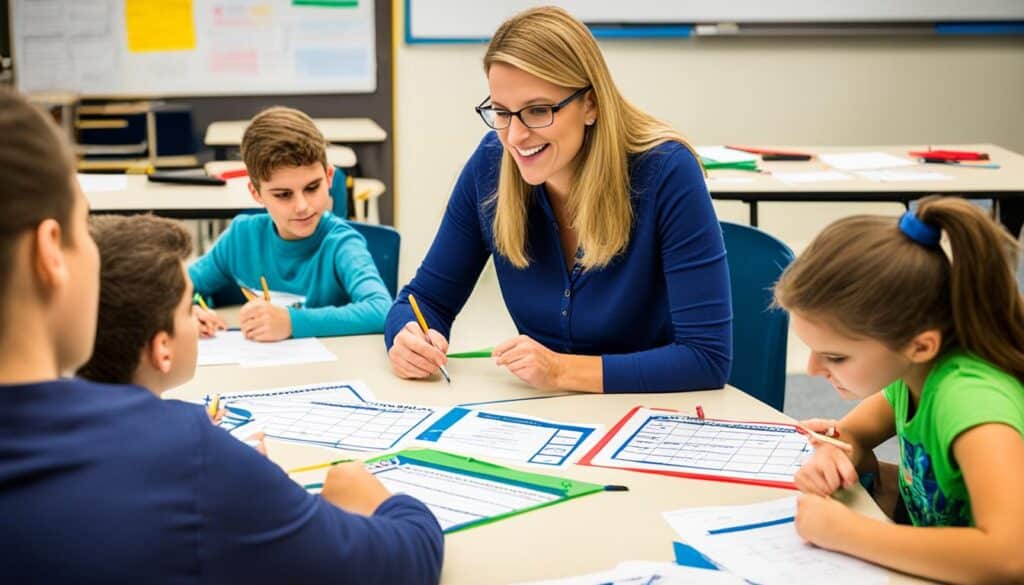
Standard-based assessments are an essential tool for measuring student performance against established learning standards. These assessments provide educators with valuable insights into student progress and ensure alignment with educational objectives. By implementing standard-based assessments, educators can make informed decisions about instruction and identify areas that may require additional support or attention.
When it comes to creating assessments that directly measure student knowledge and skills in relation to the standards, educators should consider the following:
- Define learning standards: Start by clearly defining the learning standards for your subject area or grade level. These standards serve as the basis for developing assessments that accurately measure student performance.
- Design assessment tasks: Develop assessment tasks that align with the learning standards and target the specific knowledge and skills students are expected to demonstrate. These tasks should provide students with opportunities to showcase their understanding and application of the concepts.
- Provide clear instructions: Clearly communicate the expectations and criteria for success to students. This ensures that students understand what is required of them and allows for consistent and fair evaluation of their performance.
By implementing standard-based assessments, educators can:
- Measure student performance against established learning standards
- Ensure alignment with educational objectives
- Make informed decisions about instruction
- Identify areas that may require additional support or attention
Implementing standard-based assessments supports the goal of providing high-quality education that prepares students for success. These assessments enable educators to track student progress, identify areas of improvement, and guide instructional decisions to meet students’ needs effectively.
Example of a Standard-Based Assessment Task
Here is an example of a standard-based assessment task in a middle school English class:
“Write an argumentative essay addressing the following question: ‘Should plastic bags be banned in our community?’ Your essay should include at least three reasons supported by evidence and examples. You will be evaluated based on your ability to present a clear claim, use evidence effectively, and organize your thoughts logically.”
This assessment task aligns with the learning standard of developing persuasive writing skills. It measures students’ ability to make a claim, support it with evidence, and organize their ideas coherently. By analyzing students’ performance in this assessment, educators can gain valuable insights into individual strengths and areas for improvement, allowing for targeted instruction and support.
Choosing the Right Assessment Strategy

When it comes to assessing student learning, it’s essential to choose the right assessment strategy that aligns with student needs, instructional goals, and desired outcomes. Educators have a range of assessments to choose from, each with its own advantages and benefits.
To make informed decisions, educators should carefully consider the following factors:
- Student Needs: Understand the unique needs of your students and choose assessments that cater to their learning styles and abilities.
- Instructional Goals: Determine the specific goals you want to achieve through assessments, such as measuring content mastery or evaluating critical thinking skills.
- Data-Informed Decisions: Select assessments that provide meaningful data to inform instructional decisions and help tailor teaching strategies to individual student needs.
By considering these factors, educators can choose assessments that effectively measure student progress, identify areas for improvement, and support meaningful learning and growth. Assessments should provide valuable insights that lead to actionable steps for both teachers and students.
“Choosing the right assessment strategy is a critical step in promoting student success. By selecting assessments that align with instructional goals and student needs, educators can maximize the impact of assessments and make data-informed decisions that drive learning and growth.”
Assessment Strategy Examples
There are various assessment strategies available to educators. Here are a few examples:
| Assessment Strategy | Description |
|---|---|
| Formative Assessment | Assessing student progress during instructional activities to provide timely feedback and support. |
| Summative Assessment | Evaluating student learning at the end of a course or unit to measure overall achievement. |
| Performance-Based Assessment | Evaluating students’ ability to apply knowledge and skills in real-world tasks or projects. |
| Self-Assessment | Encouraging students to reflect on their own learning progress and set personal goals. |
| Peer Assessment | Engaging students in evaluating and providing feedback on their peers’ work. |
| Standard-Based Assessment | Assessing student performance against specific learning standards or educational guidelines. |
Each assessment strategy offers unique benefits and can be used in different contexts to meet specific instructional goals.
Choosing the right assessment strategy is a crucial step in ensuring that assessments are effective, meaningful, and aligned with student needs and instructional goals. Selecting the most suitable assessments will help educators make data-informed decisions that support student growth and achievement.
Assessments for Continuous Improvement
Assessments play a crucial role in driving continuous improvement in education. By utilizing different types of assessments, educators can refine their instruction, identify areas for improvement, and track student outcomes.
Continuous improvement is essential for educational growth and the advancement of student learning. Through assessments, educators gain valuable data that informs instructional practices and facilitates data-driven decision-making. This data allows educators to evaluate student progress and adapt teaching strategies accordingly, leading to improved student outcomes.
Assessments provide insights into student strengths and weaknesses, highlighting areas where instructional adjustments may be necessary. With this information, educators can refine their instruction to better meet student needs and ensure educational improvement. Additionally, assessments help educators gauge the effectiveness of their teaching methods and make necessary adjustments to optimize student learning.
By incorporating assessments into their teaching practices, educators create a culture of continuous improvement in education. They can identify potential gaps in learning, address them promptly, and provide targeted instruction to support student growth. Regular assessment allows educators to monitor student progress, measure the impact of their teaching strategies, and make data-informed decisions. This commitment to continuous improvement ensures that students receive the best possible education and have every opportunity to succeed.
Overall, assessments are powerful tools for driving continuous improvement in education. They provide educators with valuable insights into student learning, refine teaching practices, and contribute to ongoing educational improvement. By leveraging assessments to their fullest potential, educators can foster an environment of growth and success for all students.
Also Read : Explore Saybrook University Programs & Degrees
Conclusion
In conclusion, assessments in education play a critical role in improving student learning outcomes. The various types of assessments, including formative, summative, diagnostic, performance-based, self-assessment, and peer assessment, provide educators with valuable tools to enhance teaching strategies and support student progress.
Formative assessments allow teachers to monitor student learning in real-time and provide timely feedback for growth and improvement. Summative assessments provide a comprehensive evaluation of student understanding and contribute to overall student achievement. Diagnostic assessments help identify individual student knowledge gaps and enable targeted instruction.
Performance-based assessments promote active engagement and allow students to demonstrate their knowledge and skills through real-world tasks. Self-assessment cultivates important skills such as reflection and goal-setting, while peer assessment encourages collaboration and critical evaluation skills.
By understanding the different assessment types and implementing the right strategies, educators can create a culture of continuous improvement in education. Through data-informed decisions, teachers can refine their instruction, identify areas for improvement, and ultimately enhance student learning outcomes. It is crucial for educators to embrace assessments as valuable tools that contribute to student success and educational improvement.
FAQs
Q: What are the 6 types of assessment in education?
A: The 6 types of assessment in education are formative assessment, summative assessment, ipsative assessment, norm-referenced assessment, criterion-referenced assessment, and diagnostic assessment.
Q: How is assessment of learning different from assessment for learning?
A: Assessment of learning focuses on measuring what students have learned at the end of a unit or course, while assessment for learning is used to help guide and improve the learning process as it happens.
Q: How can assessments help in education?
A: Assessments can help educators understand what students have learned, identify areas for improvement, track progress, and provide feedback for further learning.
Q: What is alternative assessment and how is it used in education?
A: Alternative assessment refers to non-traditional methods of assessing student learning, such as projects, portfolios, or performances, to provide a more holistic view of student understanding.
Q: How can assessment data be used to improve teaching and learning?
A: Assessment data can be used to identify areas where students are struggling, tailor teaching methods to individual student needs, and make informed decisions about curriculum and instructional strategies.
Q: What are effective assessments and how can they be designed?
A: Effective assessments are valid, reliable, fair, and aligned with learning objectives. They can be designed by clearly defining learning goals, using a variety of assessment methods, and providing timely feedback to students.
Q: How can assessments be used in the assessment process?
A: Assessments are used throughout the assessment process to collect data, analyze student performance, make decisions about instruction, and evaluate the effectiveness of teaching and learning strategies.
What are the benefits of using various types of assessments?
Using various types of assessments allows educators to gather a more comprehensive understanding of student learning. Different assessments provide different insights into students’ strengths and weaknesses, allowing for targeted instruction and intervention.
Source Links
- https://www.janison.com/resources/post/a-guide-to-5-school-assessment-types-and-their-key-purposes/
- https://strobeleducation.com/blog/assessing-student-learning-6-types-of-assessment-and-how-to-use-them/
- https://www.acadecraft.com/blog/types-of-assessments-in-k-12-education/